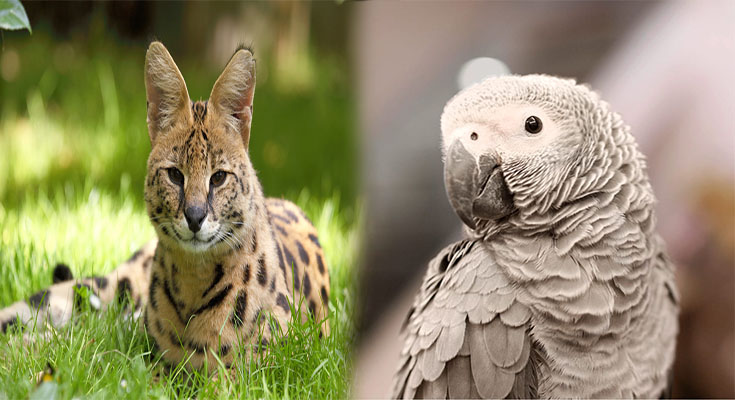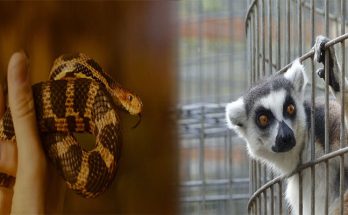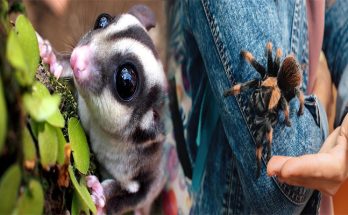The fact that you are reading this article means one of two things. Either you have already decided to get an exotic pet and are looking for information on how to care for them, or you have not yet made up your mind about getting one but would like some tips on how to go about doing so. Either way, this article will help guide you through the process of deciding if getting an exotic pet is right for you and give you some information on how to care for one properly once it arrives at your doorstep (or wherever).
Hedgehogs
Hedgehogs are nocturnal and social animals, so they’ll need to be kept in a cage with a lid. Hedgehogs also need to exercise on a wheel, which you can buy at any pet store. The bedding should be changed often to keep it clean and safe for your hedgehog, who will use it as part of his/her hideout!
Sugar Gliders
Sugar gliders are small, nocturnal marsupials that resemble flying squirrels. They are native to Australia and New Guinea, but have been introduced in many other parts of the world as exotic pets.
If you’re thinking about getting a sugar glider for your home and want to know how much they cost, what kind of environment they need, or where to buy one from–you’ve come to the right place!
Tarantulas
Tarantulas are a popular exotic pet. They can be kept in a terrarium, and will live for many years if cared for properly. Tarantulas need to be fed every few days, so you’ll want to make sure that your tarantula has enough food at all times. You should handle them with care, as they have venomous fangs that can cause pain and swelling if they bite you. It’s also important not to keep these spiders near other pets or children because they might bite them accidentally while trying to defend themselves from being handled by someone unfamiliar with their behavior patterns (something which could lead to severe injury). To keep your spider happy and healthy, it’s best if you keep it in a warm and dry place where there aren’t any lights shining directly on top of its enclosure–this will ensure that your pet gets plenty of rest without feeling stressed out by bright lights shining into its eyes all night long!
Ferrets
Ferrets are legal in all states except California, Hawaii and New York. They can be kept as pets by both adults and children alike. These social animals need to be kept in pairs or groups and require interaction with their owners on a daily basis. Ferrets are not domesticated like cats or dogs; they still act like wild animals so you should provide them with plenty of space to roam around freely inside your home.
Skinks
Skinks are a type of lizard that originates from the tropics. They come in many different colors and patterns, but they all have smooth scales and long tails. Skinks are easy to care for if you know what you’re doing; however, they can also be delicate animals if they aren’t kept at the right temperature or fed properly.
If your skink is sick or injured, it’s important that you find a vet who knows how to treat them before things get worse!
Sugar and Russian Tortoises
Sugar and Russian tortoises are both herbivores. They can live for over 100 years, so it’s important that you provide your pet with the right environment in order to ensure its health and longevity.
The first thing you need to know about these animals is that they’re very slow moving; they don’t like change, either. So if you plan on giving one as a gift or adopting one yourself, make sure that your space has an enclosure large enough for them to move around comfortably (about 5 feet by 2 feet) without feeling trapped. Sugar and Russian tortoises also need lots of sunlight throughout the day–at least four hours per day–so make sure there’s plenty of natural light coming into your house before deciding whether or not adopting one would work out well for both parties involved! The last thing we’ll mention here is temperature: sugar/Russian tortoises thrive best when kept at room temperature (between 70-80 degrees Fahrenheit).
Chilean Rose Hair Tarantula, also known as Grammostola rosea. The second largest spider in the world, but has a very mild temperament and makes a great pet for those who like spiders, but do not want to see them everywhere all the time. Usually dark brown or black in color, with dark legs and a dark stripe down their spines. They can grow up to 12 inches long and live up to 15 years.
Tarantulas are not aggressive, but they can be a little scary. They have large fangs that they use to bite their prey and inject venom into it. Tarantulas do not use this venom on humans because we are not part of their diet!
Tarantulas can live up to 15 years in captivity, so if you get one make sure it will be around for at least 10-12 years! They’re easy to care for and good for children who might not otherwise want pets like dogs or cats (or even mice).
You can keep exotic pets if you take care of them properly.
Exotic pets are a fun and rewarding experience, but it’s important to choose a pet that is suited to your lifestyle. Some exotic pets may require special care and attention, so if you don’t have the time or resources for them, it’s best not to get one in the first place.
In some areas of the country, certain types of exotic animals are illegal to own as pets because they pose too much danger or cause problems for those around them. If you live in one of these areas and still wish to keep an exotic animal as a companion, talk with local authorities about whether there are any exceptions made for such cases before purchasing or adopting your new friend
Exotic pets are a great way to have fun with your family and friends. They can also be very rewarding, as they are very affectionate creatures that love human contact. If you’re interested in getting an exotic pet, make sure you do your research first so that you know what kind of care it requires before making any decisions.





